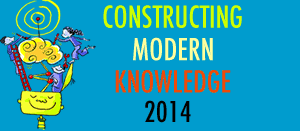danah boyd and Samantha Biegler have released a draft literature review on Risky Behaviors and Online Safety, commissioned by Harvard’s Berkman Center for Internet & Society.
This is a research review - and as you might expect, sober research doesn’t always match the sensationalist headlines and political grandstanding about “stranger danger”, cyberbullying, and sexual predation.
via danah boyd | apophenia » Risky Behaviors and Online Safety: A 2010 Literature Review.
“Concerns about online predators are pervasive, but the image that most people hold doesn’t necessarily match with the data about sexual crimes against minors. For starters, the emphasis on what takes place online tends to obscure the fact that most cases of sex crimes against children do not involve the Internet at all. As we seek to help youth who are victims, we must continue our efforts to address victimization in the home and in the community; addressing Internet- initiated victimization alone will not help the vast majority of children who are victimized. When facing interventions to address Internet-initiated victimization, we must be attentive to research that highlights that some youth are more at-risk than others. Youth who have psychosocial issues, family and school problems, and those who are engaged in risky behaviors are far more likely to be victimized than the average youth using the Internet. Targeting those who are more at-risk will allow us to help more youth. Research also suggests that most youth who are victimized are not deceived about the abuser’s age, do discuss sex online before meeting up offline, and are aware of the abuser’s sexual intentions when they decide to meet them. These youth often believe that they are in love and have no mental model for understanding why statutory rape is a crime. In order to help these youth, we cannot focus solely on preventing adults from engaging with youth; we must also help youth recognize that these encounters are abusive before they occur”
“While the Internet has affected the contours of bullying and harassment, research continues to emphasize the interplay between what occurs online and what takes place offline. Many of the same youth are susceptible to victimization and those who engage in online bullying are not wholly distinct from those who bully offline. While much research is still needed to stabilize definitions and measurements, there is little doubt that bullying is prevalent both online and offline, affecting all communities even if it doesn’t affect all individuals. We need interventions that get at the root of bullying, regardless of where it takes place. Because research consistently shows a connection between psychosocial troubles, family and school issues, and bullying, we cannot presume that parents are always equipped or present to intervene (and may in fact be part of the problem). Although countless programs have been developed to educate kids about bullying, far too little is known about the effectiveness of these programs. Finally, what happens online is more visible to adults, but we cannot assume that the most damaging acts of bullying are solely those that we are able to witness.”
Please read Risky Behaviors and Online Safety: A 2010 Literature Review.
Sylvia
